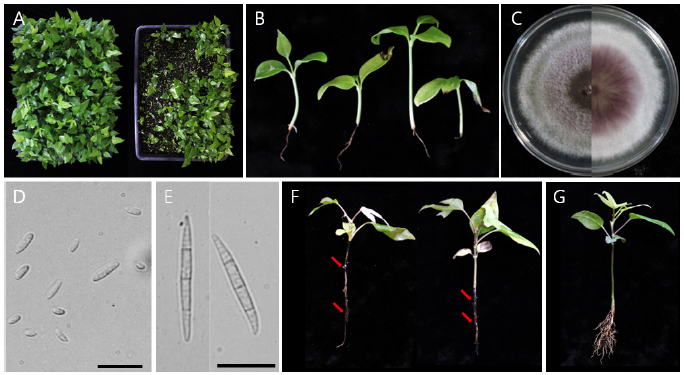Abstract
Figures & Tables

Fig. 1.Symptoms and mycological characteristics of Fusarium root rot on seedling of caused by . (A) seedlings exhibiting low germination rate and root rot symptoms (right). (B) Brown encrosis appearing on stems and roots. (C ) Top and bottom view of cultured on potato dextrose agar after 7 days. (D) Microconidia. (E) Macroconidia. Scale bars=20 μm. (F) Symptoms on stems and roots artificially inoculated with F. oxysporum. (G) Untreated control.


